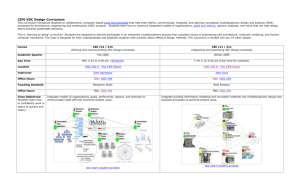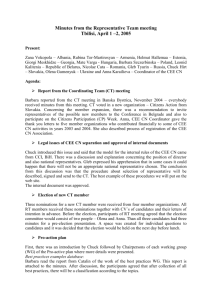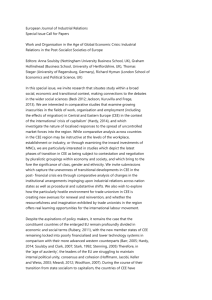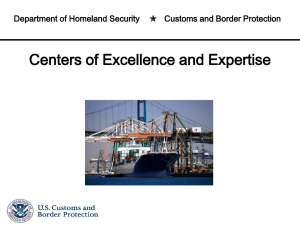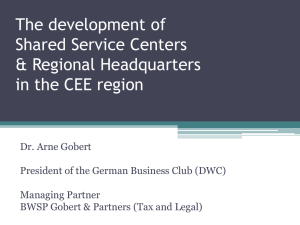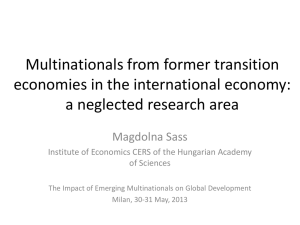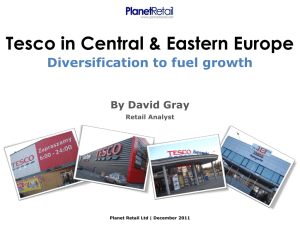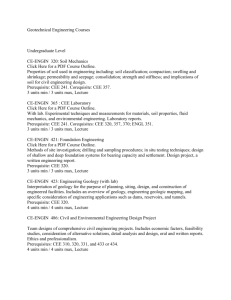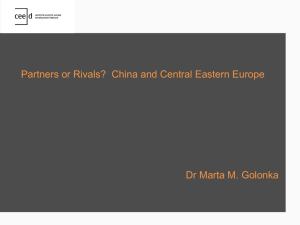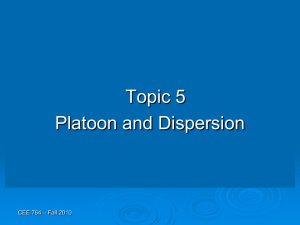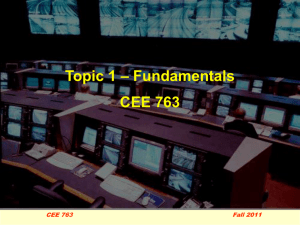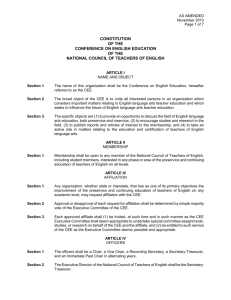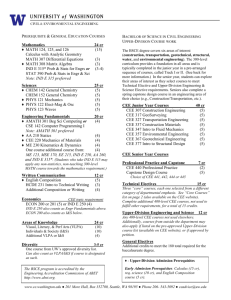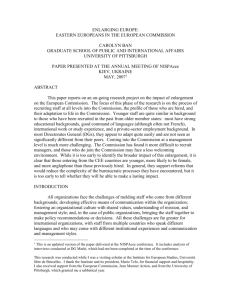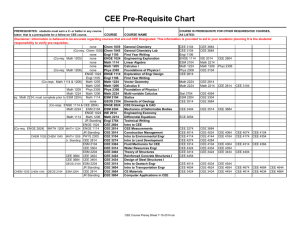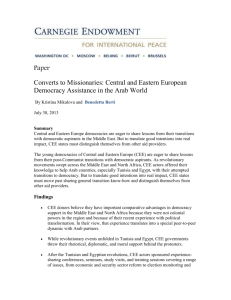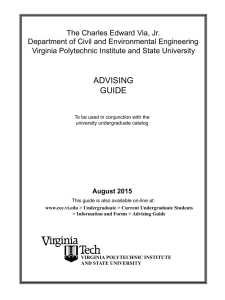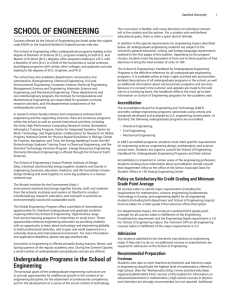Diversification Trajectories in Central and Eastern Europe since the
advertisement
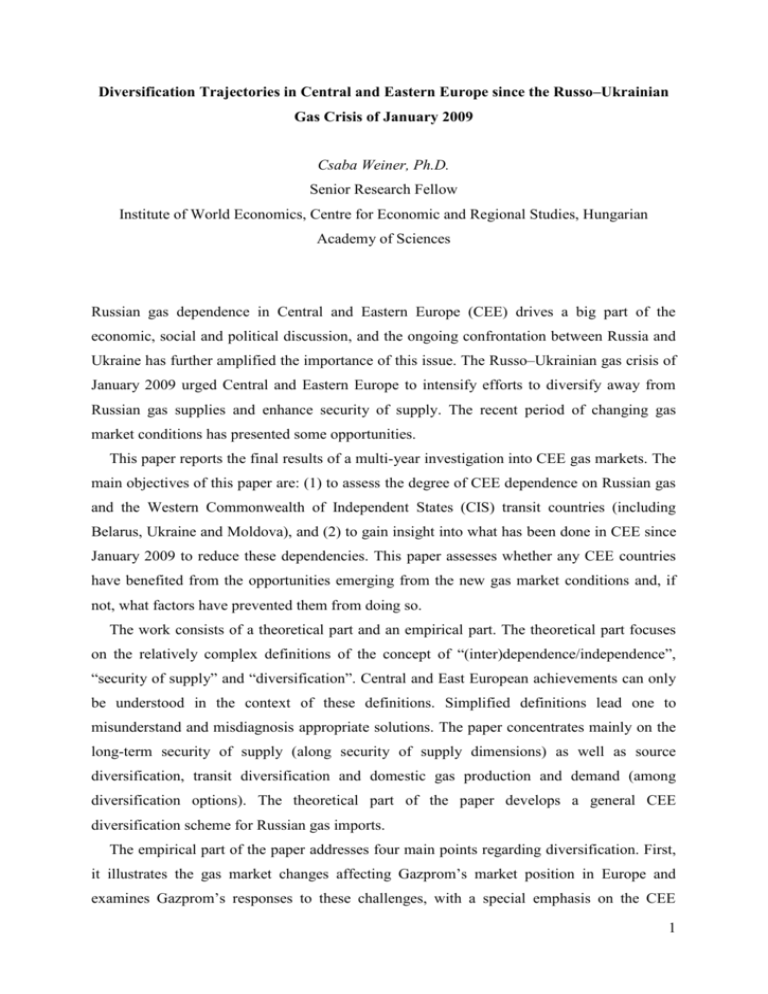
Diversification Trajectories in Central and Eastern Europe since the Russo–Ukrainian Gas Crisis of January 2009 Csaba Weiner, Ph.D. Senior Research Fellow Institute of World Economics, Centre for Economic and Regional Studies, Hungarian Academy of Sciences Russian gas dependence in Central and Eastern Europe (CEE) drives a big part of the economic, social and political discussion, and the ongoing confrontation between Russia and Ukraine has further amplified the importance of this issue. The Russo–Ukrainian gas crisis of January 2009 urged Central and Eastern Europe to intensify efforts to diversify away from Russian gas supplies and enhance security of supply. The recent period of changing gas market conditions has presented some opportunities. This paper reports the final results of a multi-year investigation into CEE gas markets. The main objectives of this paper are: (1) to assess the degree of CEE dependence on Russian gas and the Western Commonwealth of Independent States (CIS) transit countries (including Belarus, Ukraine and Moldova), and (2) to gain insight into what has been done in CEE since January 2009 to reduce these dependencies. This paper assesses whether any CEE countries have benefited from the opportunities emerging from the new gas market conditions and, if not, what factors have prevented them from doing so. The work consists of a theoretical part and an empirical part. The theoretical part focuses on the relatively complex definitions of the concept of “(inter)dependence/independence”, “security of supply” and “diversification”. Central and East European achievements can only be understood in the context of these definitions. Simplified definitions lead one to misunderstand and misdiagnosis appropriate solutions. The paper concentrates mainly on the long-term security of supply (along security of supply dimensions) as well as source diversification, transit diversification and domestic gas production and demand (among diversification options). The theoretical part of the paper develops a general CEE diversification scheme for Russian gas imports. The empirical part of the paper addresses four main points regarding diversification. First, it illustrates the gas market changes affecting Gazprom’s market position in Europe and examines Gazprom’s responses to these challenges, with a special emphasis on the CEE 1 region. Second, it investigates the role of gas and gas imports in CEE. Third, it focuses on the role of transit through the Western CIS and CEE, and the current state and impact of Russianled undersea bypass pipelines. Fourth, it assesses the changing degree of dependence in CEE countries, and reports gas supply portfolios and existing and planned infrastructure for importing gas. In contrast to other studies, this paper provides an analysis of the dependence of all 14 gas importing CEE countries on Russian gas and the Western CIS transit countries from a comparative perspective using a broad range of relevant evaluation criteria. The goal is to develop a more reliable and well-documented image of the current state of affairs under the new gas market situation and to gain a better understanding of what factors truly define CEE dependence on (and independence from) Russian gas. I find that there is great variation across the Central and East European states’ degree of dependence on gas, gas imports, Russian gas and the Western CIS transit countries. Some progress has been made in diversifying and increasing the security of supply, but the degree of progress and the patterns vary significantly from country to country. On the one hand, powerful economic considerations help to explain why diversification has not made much progress. CEE countries can take limited advantage of changing gas market conditions, due to the long-term gas import commitments and the lack of necessary import capacity. On the other hand, some countries have genuinely benefited from ongoing developments. Transitavoidance pipelines will provide large additional capacity which can also increase security of supply for CEE consumers by providing the opportunity to arbitrage across gas transit corridors. Despite many criticisms, the EU has taken steps that may help mitigate (the fear of) Russian influence. 2
